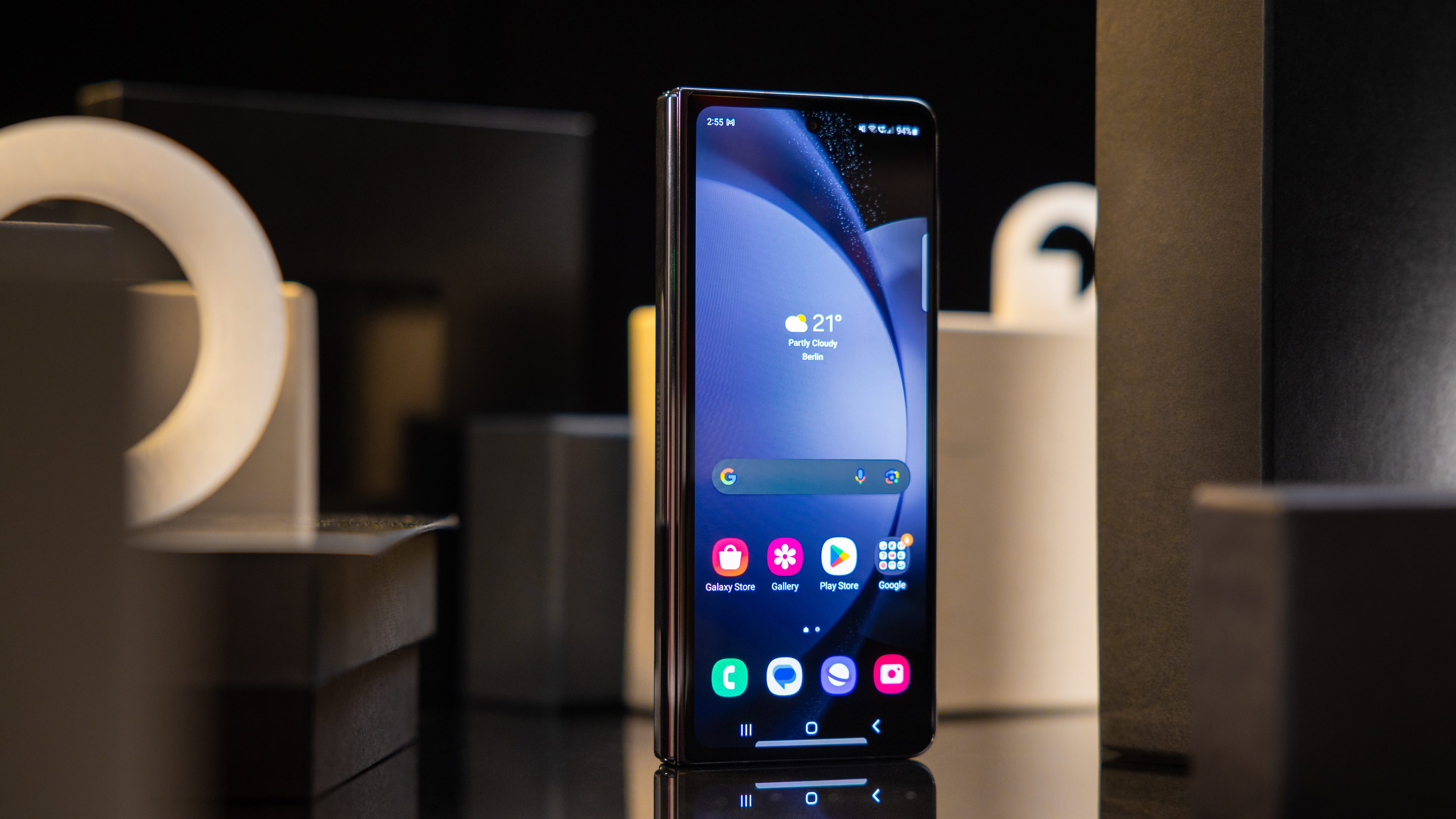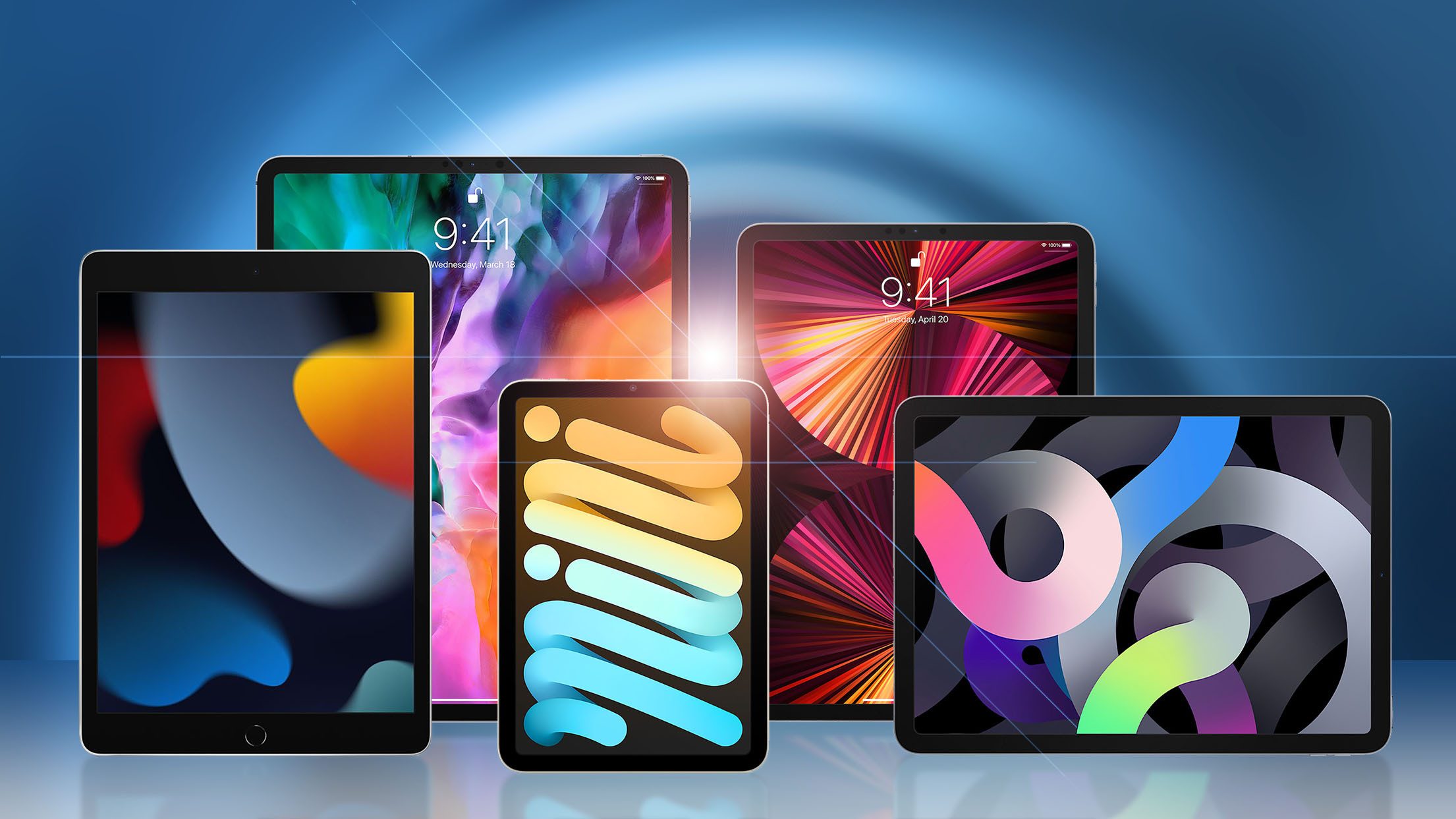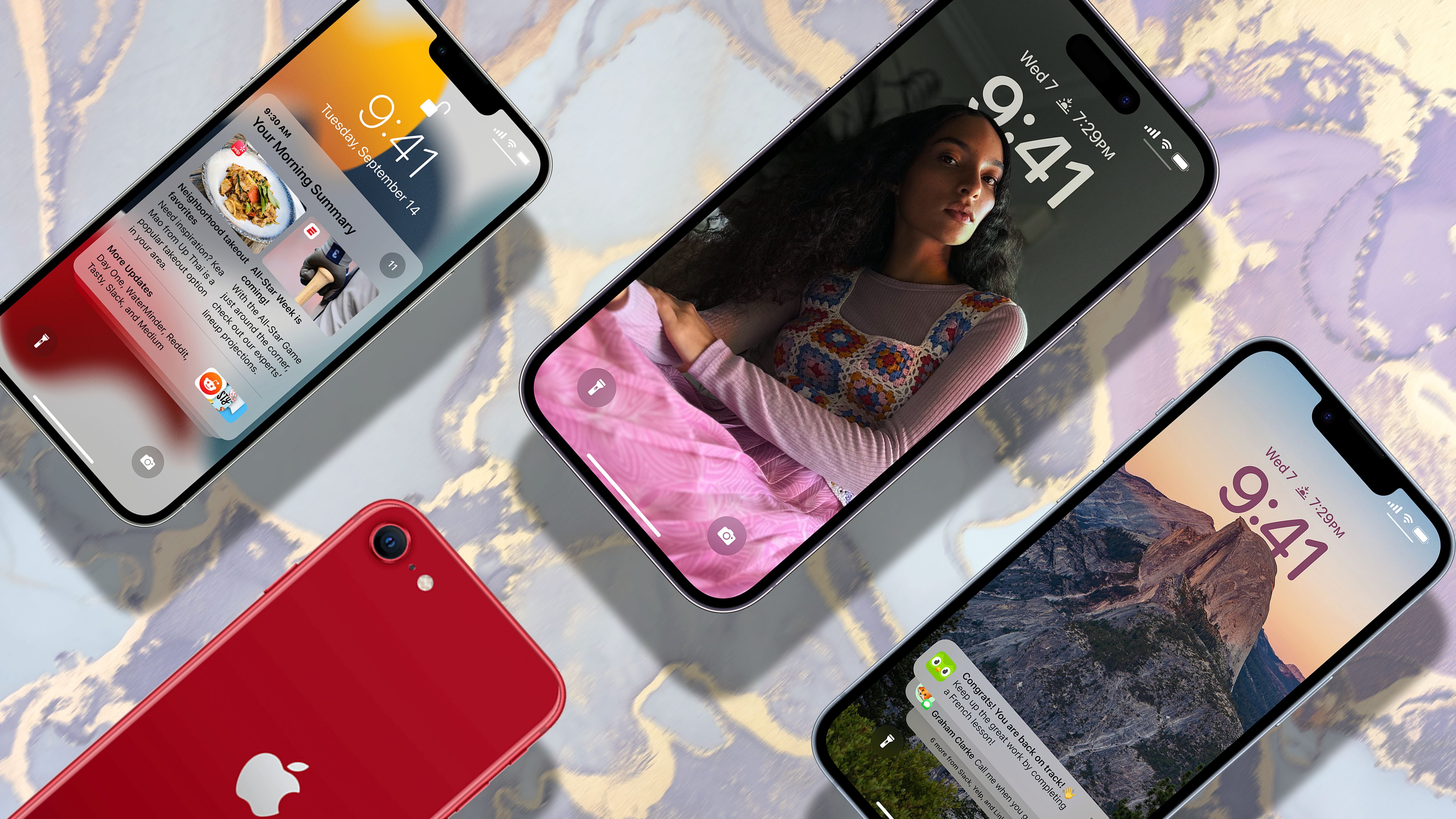
All iPhones in 2023 compared
| Regular model | Plus model (large) | Pro model (small) | Pro model (large) | Regular model | Mini iPhone | Pro model (small) | Pro model (large) | Regular model (2020) | Mini iPhone (2020) | Budget iPhone | |
|---|---|---|---|---|---|---|---|---|---|---|---|
| Product | Apple iPhone 14 | Apple iPhone 14 Plus | Apple iPhone 14 Pro | Apple iPhone 14 Pro Max | |||||||
| MSRP | from $799 | from $899 | from $999 | from $1,099 | from $799 | from $699 | from $999 | from $1,099 | from $699 | from $599 | from $429 |
| Image | 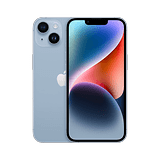 | 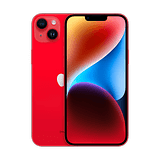 |  | 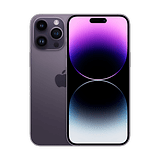 | 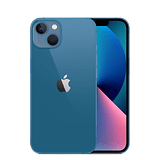 | 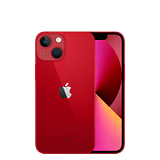 | 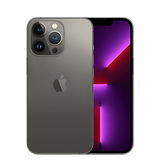 |  | 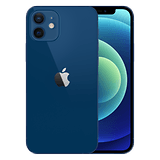 |  | 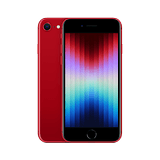 |
| Technical Specifications | 6.1-inch, OLED, 60 Hz 2532 x 1170 pixels (460 PPI) Apple A15 Bionic, 5G 128 / 256 / 512 GB ROM Dual camera 12 megapixels wide-angle 12 megapixels ultra-wide-angle September 2022 | 6.7-inch, OLED, 60 Hz 2532 x 1170 pixels (460 PPI) Apple A15 Bionic, 5G 128 / 256 / 512 GB ROM Dual camera 12 megapixels wide-angle 12 megapixels ultra-wide-angle September 2022 | 6.1-inch, OLED, 120 Hz 2532 x 1170 pixels (460 PPI) Apple A16 Bionic, 5G 128 / 256 / 512 GB / 1 TB ROM Triple camera 48 megapixels wide-angle 12 megapixels ultra-wide 12 megapixels telephoto September 2022 | 6.7-inch, OLED, 120 Hz 2532 x 1170 pixels (460 PPI) Apple A16 Bionic, 5G 128 / 256 / 512 GB / 1 TB ROM Triple camera 48 megapixels wide-angle 12 megapixels ultra-wide 12 megapixels telephoto September 2022 | 6.1-inch, OLED, 60 Hz 2532 x 1170 pixels (460 PPI) Apple A15 Bionic, 5G 128 / 256 / 512 GB ROM Dual camera 12 megapixels wide-angle 12 megapixels ultra-wide-angle September 2021 | 5.4-inch, OLED, 60 Hz 2340 x 1080 pixels (476 PPI) Apple A15 Bionic, 5G 128 / 256 / 512 GB ROM Dual camera 12 megapixels wide-angle 12 megapixels ultra-wide-angle September 2021 | 6.1-inch, OLED, 120 Hz 2532 x 1170 pixels (460 PPI) Apple A15 Bionic, 5G 128 / 256 / 512 GB / 1 TB ROM Triple camera 12 megapixels wide-angle 12 megapixels ultra-wide 12 megapixels telephoto September 2021 | 6.7-inch, OLED, 120 Hz 2778 x 1284 pixels (458 PPI) Apple A15 Bionic, 5G 128 / 256 / 512 GB / 1 TB ROM Triple camera 12 megapixels wide-angle 12 megapixels ultra-wide 12 megapixels telephoto September 2021 | 6.1-inch, OLED, 60 Hz 2532 x 1170 pixels (460 PPI) Apple A14 Bionic, 5G 64 / 128 / 256 GB ROM Dual camera 12 megapixels wide-angle 12 megapixels ultra-wide-angle October 2020 | 5.4-inch, OLED, 60 Hz 2340 x 1080 pixels (476 PPI) Apple A14 Bionic, 5G 64 / 128 / 256 GB ROM Dual camera 12 megapixels wide-angle 12 megapixels ultra-wide-angle October 2020 | 4.7-inch, LCD display, 60 Hz 1334 x 750 pixels (326 PPI) Apple A15 Bionic, 5G 64 / 128 / 256 GB ROM Single camera 12 megapixels wide-angle March 2022 |
| Good |
|
|
|
|
|
|
|
|
|
| |
| Bad |
|
|
|
|
|
|
|
|
|
| |
| Ratings | Read the iPhone 14 review | Read the iPhone 14 Plus review | Read the iPhone 14 Pro review | Read the iPhone 14 Pro Max review | Read the iPhone 13 review | Read the iPhone 13 mini review | Read the iPhone 13 Pro review | Read the iPhone 13 Pro Max review | Read the iPhone 12 mini review | Read the iPhone SE 2022 review | |
| Offers* |
The iPhone 14 series is the latest range announced by Apple. Introduced on September 7, 2022, the new series has dropped the mini model to make way for the Plus variant. With this, we had the announcement of the iPhone 14 and iPhone 14 Plus, whose differences are limited to screen size and battery; as well as the iPhone 14 Pro and iPhone 14 Pro Max which bring advanced hardware and software features.
As usual, Apple also retains its older models in the catalog. In the coming months, these are the previous models that you can still purchase: the iPhone 13 and the iPhone 12 ranges, and the iPhone SE 2022.
Below are the different iPhone models presented in detail. Use the links in the table of contents to check out the specific handset that you are interested in.
iPhone 14 Pro and Pro Max: $999 to $1,599
| Pro model (small) | Pro model (large) | |
|---|---|---|
| Product | ||
| MSRP | from $999 | from $1,099 |
| Image |  |  |
| Technical specifications | 6.1-inch, OLED, 120 Hz 2532 x 1170 pixels (460 PPI) Apple A16 Bionic, 5G 128 / 256 / 512 GB / 1 TB ROM Triple camera 48 megapixels wide-angle 12 megapixel ultra-wide 12 megapixel telephoto camera September 2022 | 6.7-inch, OLED, 120 Hz 2532 x 1170 pixels (460 PPI) Apple A16 Bionic, 5G 128 / 256 / 512 GB / 1 TB ROM Triple camera 48 megapixels wide-angle 12 megapixel ultra-wide 12 megapixel telephoto camera September 2022 |
| Good |
|
|
| Bad |
|
|
| Ratings | Read the iPhone 14 Pro review | Read the iPhone 14 Pro Max review |
| Offers* |
Just like last year, the iPhone 14 Pro and iPhone 14 Pro Max models differ only in screen size and battery capacity. However, compared to the iPhone 14 series we had many differences in 2022. Starting with the processor: now the Pro models stand out by being the only ones to offer the latest version of Apple’s proprietary SoC.
The new iPhone 14 Pro models feature the new A16 Bionic processor based on the 4 nm process. It’s a six‑core CPU with 2 performance and 4 efficiency cores. According to Apple, the five-core GPU has 50% more memory bandwidth for mobile gaming this year.
The SoC also incorporates a new engine for the display to optimize the ProMotion refresh rate of 120 Hz and the antialiasing function, among others. Speaking of the display, the Pro models adopted a new pill-shaped notch called Dynamic Island, in which Apple houses the 12 MP TrueDepth front camera and the Face ID sensors under the screen. Apple says that it takes up 30% less space on the screen.
When it comes to software, the Dynamic Island shows animations on the screen for notifications, alerts, and other contextual information. Both models now also exclusively offer the Always-on display function.
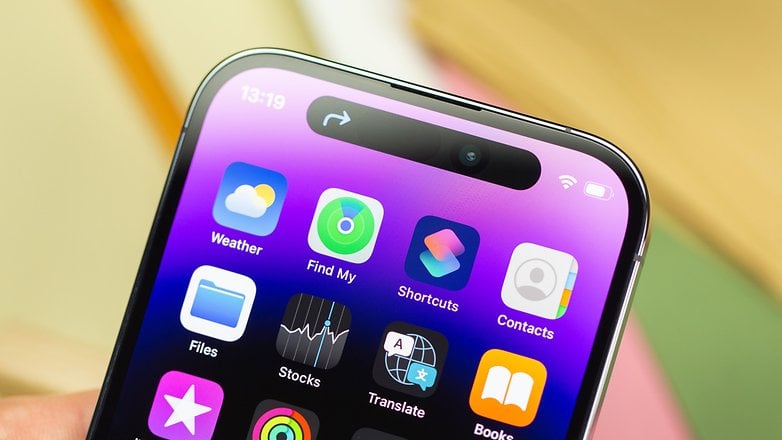
Read the Apple iPhone 14 Pro review
Read the Apple iPhone 14 Pro Max review
When it comes to the camera module, we have had a leap in resolution over last year’s models. There is a brand-new camera module at the back of the Pro models. The main lens goes from 12 to 48 MP and has a quad-pixel system allowing 4-in-1 pixel binning (in 12 MP for the final resolution count). We also have a 12 MP ultra-wide angle lens on board that allows macrophotography, and a dedicated 12 MP telephoto lens.
On the video side, the iPhone 14 Pro and 14 Pro Max can shoot in ProRes and benefit from the new Action Mode to stabilize videos and compensate for camera movement. ProRAW support and a LiDAR sensor are also found only in the Pro models.
Last but not least, we finally had the announcement of Satellite emergency calls for the new iPhone 14 Pro Series!
url3=”https://sovrn.co/1h0rhhv”>(with fallback offer from Verizon)
iPhone 14 and iPhone 14 Plus: $799 to $1,199
| Regular iPhone | Plus iPhone | |
|---|---|---|
| Product | ||
| MSRP | from $799 | from $899 |
| Image |  |  |
| Technical specifications | 6.1-inch, OLED, 60 Hz 2532 x 1170 pixels (460 PPI) Apple A15 Bionic, 5G 128 / 256 / 512 GB ROM Dual camera 12 megapixels wide-angle 12 megapixels ultra-wide-angle September 2022 | 6.7-inch, OLED, 60 Hz 2532 x 1170 pixels (460 PPI) Apple A15 Bionic, 5G 128 / 256 / 512 GB ROM Dual camera 12 megapixels wide-angle 12 megapixels ultra-wide-angle September 2022 |
| Good |
|
|
| Bad |
|
|
| Rating | Read the iPhone 14 review | Read the iPhone 14 Plus review |
| Offers* |
Due to the low interest in the mini variant, in 2022 Apple bet on a new strategy regarding the vanilla models of the iPhone 14 series. We no longer have the 5.4-inch option, but the Plus variant instead, with the same 6.7-inch screen found on the Pro Max model.
As mentioned above, the iPhone 14 and iPhone 14 Plus feature the same Apple A15 Bionic chipset as last year’s series in conjunction with a 5-core GPU. Both models are obviously compatible with 5G and, in the United States, Apple will offer only the eSIM option onboard.

Read the Apple iPhone 14 review
Setting aside the difference in display size between the vanilla and Plus models, the other features are the same: Both displays have a refresh rate of 60 Hz, can reach a maximum brightness (peak) of 1,200 nits, and retain the classic notch that has become a trademark of Apple.
When it comes to the camera module, the non-Pro models buyers have to do without the telephoto lens. On the other hand, the iPhone 14 and iPhone 14 Plus come with the new Action Mode and an improved camera set. Here we have a dual camera module carried by a new 12 MP main lens. The sensor is larger in comparison to the preview generation, with a physical size of 1.9 µm. The ultra-wide camera has a 12 MP sensor that Apple did not provide additional details on.
iPhone 13 and iPhone 13 Mini: from $699 to $1,099
| Regular iPhone | Mini iPhone | |
|---|---|---|
| Product | ||
| MSRP | from $799 | from $699 |
| Image |  |  |
| Technical specifications | 6.1-inch, OLED, 60 Hz 2532 x 1170 pixels (460 PPI) Apple A15 Bionic, 5G 128 / 256 / 512 GB ROM Dual camera 12 megapixels wide-angle 12 megapixels ultra-wide-angle September 2021 | 5.4-inch, OLED, 60 Hz 2340 x 1080 pixels (476 PPI) Apple A15 Bionic, 5G 128 / 256 / 512 GB ROM Dual camera 12 megapixels wide-angle 12 megapixels ultra-wide-angle September 2021 |
| Advantages |
|
|
| Disadvantages |
|
|
| Rating | Read the iPhone 13 review | Read the iPhone 13 mini review |
| Offers* |
On paper, the iPhone 13 and iPhone 13 mini are “small” iPhones. But in reality, the iPhone 13 and iPhone 13 mini hardly have to cower behind the Pro models. Equipped with the Apple A15 Bionic chipset, making them on par with the Pro series in terms of processing power, while the screens should be great to look at again thanks to HDR support, TrueTone, and OLED technology. Unlike the Pro models, however, the refresh rate is limited to just 60 Hz which is positively archaic in this day and age.
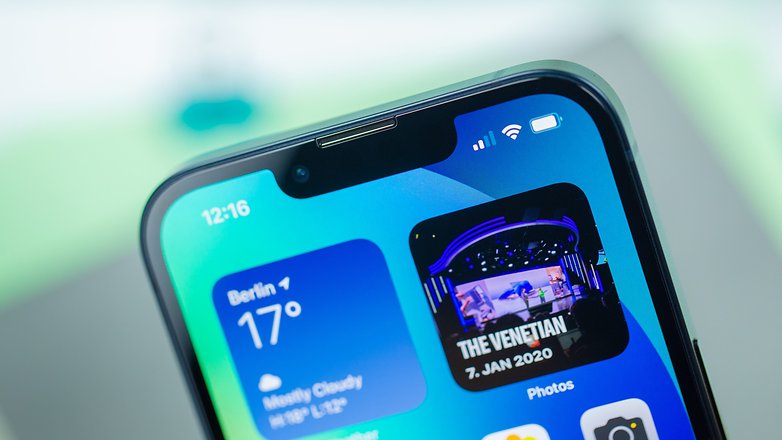
Buyers of the non-Pro models have to do without the telephoto lens. On the other hand, the iPhone 13 and iPhone 13 mini come with the new Cinematic Mode, which allows video recordings to achieve better depth of field. The smartphone can either adjust the focus for you or you can adjust it yourself with a tap on the display. The focus point can even be set once the recording begins.
Sometime after the release, we tested both the iPhone 13 and the iPhone 13 mini in detail. In the process, we conducted a long-term test on the mini model and tested how well a phone with a 5.4-inch display performs in everyday use for three months. The result: the mini-iPhone is very well suited for people with smaller hands or Apple fans who prefer smaller devices.
The performance of the display, the camera, and the A15 Bionic are not inferior to the standard model. Only the battery is a drawback because it does not quite last the day during intensive use. You can read more in Ben’s long-term test on the linked page.
iPhone 12: from $599
| Regular iPhone (2020) | Mini iPhone (2020) | |
|---|---|---|
| Product | ||
| MSRP | from $599 | discontinued |
| Image |  |  |
| Technical specifications | 6.1-inch, OLED, 60 Hz 2532 x 1170 pixels (460 PPI) Apple A14 Bionic, 5G 64 / 128 / 256 GB ROM Dual camera 12 megapixels wide angle 12 megapixels ultra-wide angle October 2020 | 5.4-inch, OLED, 60 Hz 2340 x 1080 pixels (476 PPI) Apple A14 Bionic, 5G 64 / 128 / 256 GB ROM Dual camera 12 megapixels wide angle 12 megapixels ultra-wide angle October 2020 |
| Pros |
|
|
| Cons |
|
|
| Rating | Read the Apple iPhone 12 hands-on | Read the Apple iPhone 12 mini review |
| Offers* | Check Price | Check Price |
Traditionally, Apple also offers older models at lower prices in addition to the current generation iPhones. In the US, you can still officially buy the iPhone 12 at Apple, while saving some money along the way if you are OK with not having the latest and the greatest.
For the vast majority of users, the Apple A14 Bionic from last year should still offer enough processing power while having 5G support is another plus point for the iPhone 12 and iPhone 12 mini. Previous year’s models “only” offer 30 fps for 4K video recording, while the new Cinematic Mode is not available despite being updated to iOS 15.

But even if the two camera modules are a sensor generation older and rely on optical instead of mechanical image stabilization: iPhone 12 and iPhone 12 mini also offer great image quality and can keep up with most smartphones. You just have to make do without the telephoto camera.
iPhone SE (2022): from $429
| Bargain purchase | |
|---|---|
| Product | |
| MSRP | from $429 |
| Image |  |
| Technical specifications | 4.7-inch, LCD, 60 Hz 1334 x 750 pixels (326 PPI) Apple A15 Bionic, 5G 64 / 128 / 256 GB ROM Single camera 12 megapixels wide-angle March 2022 |
| Pros |
|
| Cons |
|
| Ratings | Read the Apple iPhone SE 2022 review |
| To the offer* |
The entry-level smartphone in Apple’s lineup right now is the iPhone SE 2022. The smartphone is special because Apple relies on the same design as the iPhone 8, but you get the powerful A15 Bionic with 5G support and better image processing for photos. The SE 2022 is particularly suitable for users who want a new phone but do not want to change the handling and design.
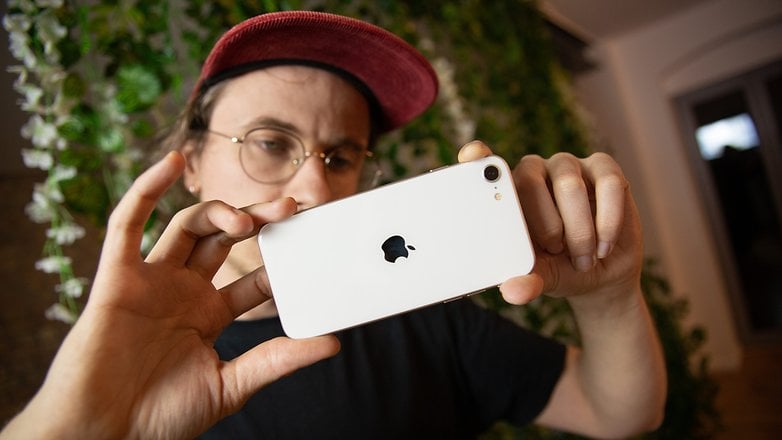
When it comes to the camera module though, the cheapest iPhone you can buy in 2023 has only a single 12-megapixel camera with no dedicated Night Mode and an aperture of f/1.8.
iPhone 13 Pro and 13 Pro Max: Exciting alternatives
| Pro model (small) | Pro model (large) | |
|---|---|---|
| Product | ||
| MSRP | from $999 | from $1,099 |
| Image |  |  |
| Technical specifications | 6.1-inch, OLED, 120 Hz 2532 x 1170 pixels (460 PPI) Apple A15 Bionic, 5G 128 / 256 / 512 GB / 1 TB ROM Triple camera 12 megapixels wide-angle 12 megapixels ultra-wide 12 megapixels telephoto September 2021 | 6.7-inch, OLED, 120 Hz 2778 x 1284 pixels (458 PPI) Apple A15 Bionic, 5G 128 / 256 / 512 GB / 1 TB ROM Triple camera 12 megapixels wide-angle 12 megapixels ultra-wide 12 megapixels telephoto September 2021 |
| Pros |
|
|
| Cons |
|
|
| Ratings | Read the iPhone 13 Pro review | Read the iPhone 13 Pro Max review |
| Offers* |
In the iPhone 13 Pro and iPhone 13 Pro Max, Apple packed everything including the kitchen sink. This year, there are no differences between the two Pro models apart from the display size and battery capacity. Of course, everything else that is underneath the hood, which you will also find in the “normal” iPhone 13 models, includes the Apple A15 Bionic chipset with 5G support, Face ID, MagSafe support, and an IP68-certified chassis.
When it comes to mobile games, the iPhone 13 Pro and Pro Max have a few extras up their sleeves: The GPU has been upgraded with the inclusion of an additional processing core. And the OLED screens now manage refresh rates of up to 120 Hz. iOS 15 will dynamically adjust the refresh rate depending on the displayed content to save the battery. Speaking of battery life, iPhone 13 Pro and iPhone 13 Pro Max’s battery life is said to have improved by 1.5 and 2.5 hours, respectively, compared to their respective predecessors.
The iPhone with the longest battery life ever is the iPhone 13 Pro Max—Camila Rinaldi found that out in her review. She used the most expensive smartphone for a long time, using it as a “daily driver”. Only Quick-Charging leaves something to be desired compared to many Android alternatives. She was also not convinced by Face ID’s performance.

The Pro models also offer more capability in terms of cameras. The most obvious here would be the additional telephoto lens, which now offers a triple optical zoom feature and has an optical image stabilizer on iPhone 13 Pro and Pro Max. Alongside this, though, there are also larger sensors on the main camera, which should further improve image quality, especially in low-light conditions. ProRAW support and a LiDAR sensor are also found only in the Pro models.
As of January 2023, the iPhone 13 Pro and iPhone 13 Pro Max models can only be found at authorized Apple retailers, such as Amazon, for example.
iOS 16: Current software version
With the new iPhone generation, a new operating system is, of course, part of the deal. iOS 16 has just been made official with the release of the new iPhone 14 and is the current version of the iPhone software. The new operating system offers some fresh visual cues, like the customizable lock screen that gives you more control over the information you see before unlocking via Face ID or Touch ID.
During its September keynote, Apple also introduced new features such as emergency calls via satellite or Always-On-Display. Other new features that we have already been able to try out in iOS 16 include dynamic notifications that display a live overview of your pizza order, for example. You can read more about our findings in our iOS 16 guide.

Apple has already started releasing iOS 16 to supported devices on September 7. To check whether iOS 16 is available for your device now, follow the steps described in our guide on how to update the software of your iPhone!
Next generation: iPhone 15 and iPhone 15 Pro
What’s next after the iPhone 14? The iPhone 15, of course! Even before the launch of the iPhone 14 series, rumors about its successor have already begun to make their rounds. According to these rumors, the 2023 iPhone 15 is going to be packed with some amazing features that are sure to make your life easier and more enjoyable.
It appears that the new iPhone 15 and iPhone 15 Pro models will be available in two different sizes: a 6.1-inch and a 6.7-inch option. This gives you the flexibility to choose the size that best suits your needs and preferences. Another rumored feature that’s got us pretty pumped is the Dynamic Island, which is expected to be available on all the models this time around.
The upcoming iPhone 15 models are expected to feature the Sony IMX903 image sensor, which doubles the saturation signal in each pixel, allowing for better light capture and reducing issues with underexposure and overexposure. This will result in improved portraits and other images, even when strong backlighting is present. It is not yet clear if all iPhone 15 models will feature this new sensor technology, or if it will be limited to the higher-end “Pro” models.
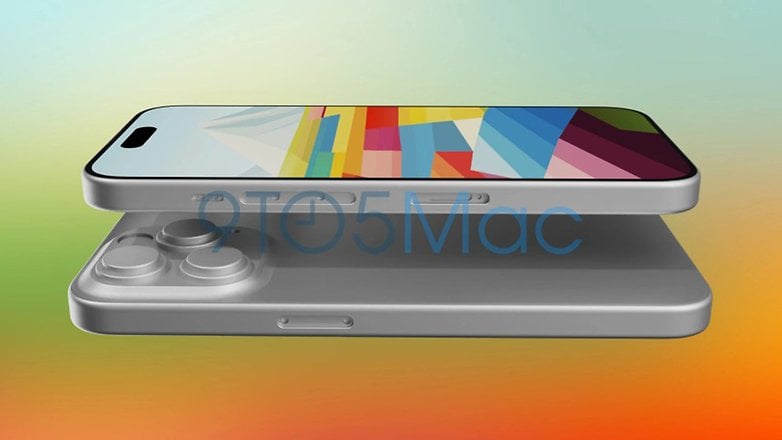
Another 2023 Pro Max variant exclusive could be the inclusion of a periscope camera. This technology offers enhanced optical zoom capabilities, with 5x or even 10x optical zoom capabilities. This is a significant improvement over the current 3x zoom limit of the Pro models.
Apple analyst Ming-Chi Kuo believes that the iPhone 15 Pro Max will feature 6x optical zoom when it adopts the periscope lens. Meanwhile, the iPhone 15 Pro will feature a standard zoom lens, and the iPhone 15 models will be limited to wide and ultra-wide lenses.
The new series is also expected with the long-awaited switch to a USB-C port. This change will make it easier to connect your phone to other devices and transfer data. However, it’s important to note that Apple may choose to reserve this option for the iPhone 16 line. Keep in mind that the EU committee established in 2022 the use of USB-C as the standard in the European Union beginning in 2024.
It’s worth noting that the launch of the iPhone 15 and iPhone 15 Pro series is still a few months away. As such, it’s important to keep in mind that the initial rumors should be taken with a grain of salt. The official announcement from Apple is typically made in September, so we’ll have to wait until then to get a better understanding of what the new models will offer.
Previous iPhone models
With which iPhone generation was Touch ID introduced? Or the Dynamic Island? When did Apple retire the headphone jack? And when did Antennagate happen? Join us on a journey through the iPhone’s past in an overview of the iPhone’s history below:
Apple iPhone: model overview
| Year | Models | Highlights |
|---|---|---|
| 2023 | iPhone 15* | |
| 2022 | iPhone 14 iPhone 14 Plus iPhone 14 Pro iPhone 14 Pro Max |
|
| 2022 | iPhone SE (2022) |
|
| 2021 | iPhone 13 iPhone 13 mini iPhone 13 Pro iPhone 13 Pro Max |
|
| 2020 | iPhone 12 iPhone 12 mini iPhone 12 Pro iPhone 12 Pro Max |
|
| 2020 | iPhone SE (2020) |
|
| 2019 | iPhone 11 iPhone 11 Pro iPhone 11 Pro Max |
|
| 2018 | iPhone XR iPhone XS iPhone XS Max |
|
| 2017 | iPhone X iPhone 8 iPhone 8 Plus |
|
| 2016 | iPhone 7 iPhone 7 Plus |
|
| 2016 | iPhone SE |
|
| 2015 | iPhone 6s iPhone 6s Plus |
|
| 2014 | iPhone 6 iPhone 6 Plus |
|
| 2013 | iPhone 5s iPhone 5c |
|
| 2012 | iPhone 5 |
|
| 2011 | iPhone 4s |
|
| 2010 | iPhone 4 |
|
| 2009 | iPhone 3GS |
|
| 2008 | iPhone 3G |
|
| 2007 | iPhone |
|
*Predicted – Apple probably won’t unveil the iPhone 15 series until the fall of 2023.
Did we forget anything? Do you have any suggestions or feedback for us? We look forward to your comments!
This article has been updated in April 2023 with new information about the forthcoming iPhone 15 series. All previous comments have been preserved.




